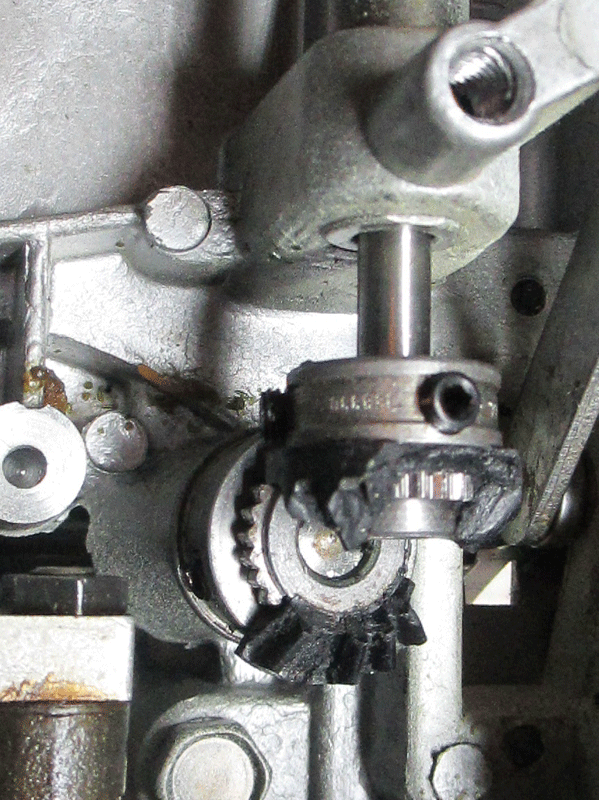Sewing Machine Gear Replacement: All the Details
- Andi Settlemoir Barney
- Jul 27, 2018
- 4 min read
When we think of vintage or antique sewing machines, we think of machines built to last. Sometimes indestructible. Unfortunately, this isn't true for all Singer sewing machines. In the late 60s, Singer was going through a financial struggle, and replaced many metal parts with plastic or nylon parts. Most common are the gears, unfortunately.
Here are some pictures of broken gears from machines in our shop:
The Touch & Sew machines are the most notable machines, as the majority of this family's models were the first generation of plastic or nylon gears. It is safe to assume that Singer T&S 600 and 603 likely have metal gears, but other models are likely to have non-metal gears.
These machines were modern marvels - after all, it is pretty cool that you wind your bobbin IN the machine rather than having to unthread and wind the bobbin, then reload. There were some typical issues in their prime, such as misalignment, tension issues, and other annoyances. But in their prime, the gears did great.
Hence, the beginning of "throw away" machines.
Here are a few examples of machines that commonly have gear issues:
What typically happens is, you're sewing along on your machine, and all of a sudden, something isn't right. It might skip stitches, it might not feed, or the thread might not pick up at all from the bobbin. But it's almost always sudden, maybe occasionally you can start to see signs before it stops working altogether.
Here's a short video showing a machine in operation and the feed dogs not moving.
I'm assuming gears have been falling apart for many years, but I see more and more broken gears with each passing week in our shop. Most heartbreaking is when it's a family heirloom machine, one that the family thought would last forever.
The good news is, the gears can be replaced with a modern version that is much more durable and will last many generations. Unfortunately, there isn't a metal gear option available, but the modern gears are made to last.
A few things about having your gears replaced:
1. We offer a flat fee on gear replacement. On lower gears (we replace all lower gears at once), the flat fee is $180. To have upper gears replaced, the flat fee is $225. To have all gears replaced, the flat fee is $250. Again, this includes all parts, labor, and standard service. All service comes with 6-month labor warranty.
2. Gear replacement is not a quick process. This service is not widely available, and we are one of the few shops that offer this in the Metro Atlanta Area. This means that we have a back log of machines waiting for gear replacement. Additionally, gear replacement is not a quick process. We have to disassemble your machine, which is very tedious, replace the gears, then re-assemble the machine, which is even more tedious. We run into issues, have struggles, and nearly lose our minds at time, so please expect a minimum of 3-4 months on the replacement of your gears, sometimes longer. We will keep you updated on the progress of your machine.
3. Gear replacement is part art, part science, and almost always intuition. Once your machine goes home, it may need to come back for additional adjustment (this is one reason we offer the 6-month labor warranty with service). Gears need to settle in to their new home, and while your gears may be new, the other parts around them are the same old parts that have had 30, 40, 50 years of use and have relaxed with time. Most of the time, gear replacement is successful on the first try, but occasionally, machines with recently replaced gears need to come back for additional work.
4. In very rare cases, gear replacement is impossible. We don't know this until we attempt to replace the gears in a machine and the parts just won't align. The reason for this is because these machines have been in their current state for 40+ years. When the machine is used, the shafts and other parts warp and settle in naturally. When we disassemble the machine to replace the gears, that warping can cause issues such as not being able to slide a shaft through a setting to replace gears. Again, this is very rare, but it does happen. We make multiple attempts and try different solutions to resolve the issue, but in the end, if we can't produce a quality, functioning machine, we will not consider it "good". If this happens, you will not be charged for any of the labor.
One of the most common questions is, "Is it worth it?"
This is a loaded question. To some degree, it is likely cheaper to replace the machine once the gears have run their course. However, the majority of these machines are family heirlooms and have more value than just repair cost or financial value. Also, some sewists have been using their machine so long, there just isn't a desire to learn a new machine, and so fixing this one is worth it.
If it is a machine you don't have an emotional attachment to or one you've acquired recently and don't wish to invest into repairs, then it is time for a new machine.























